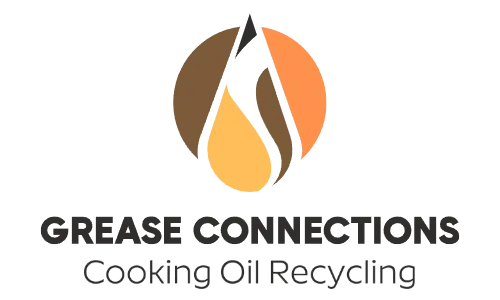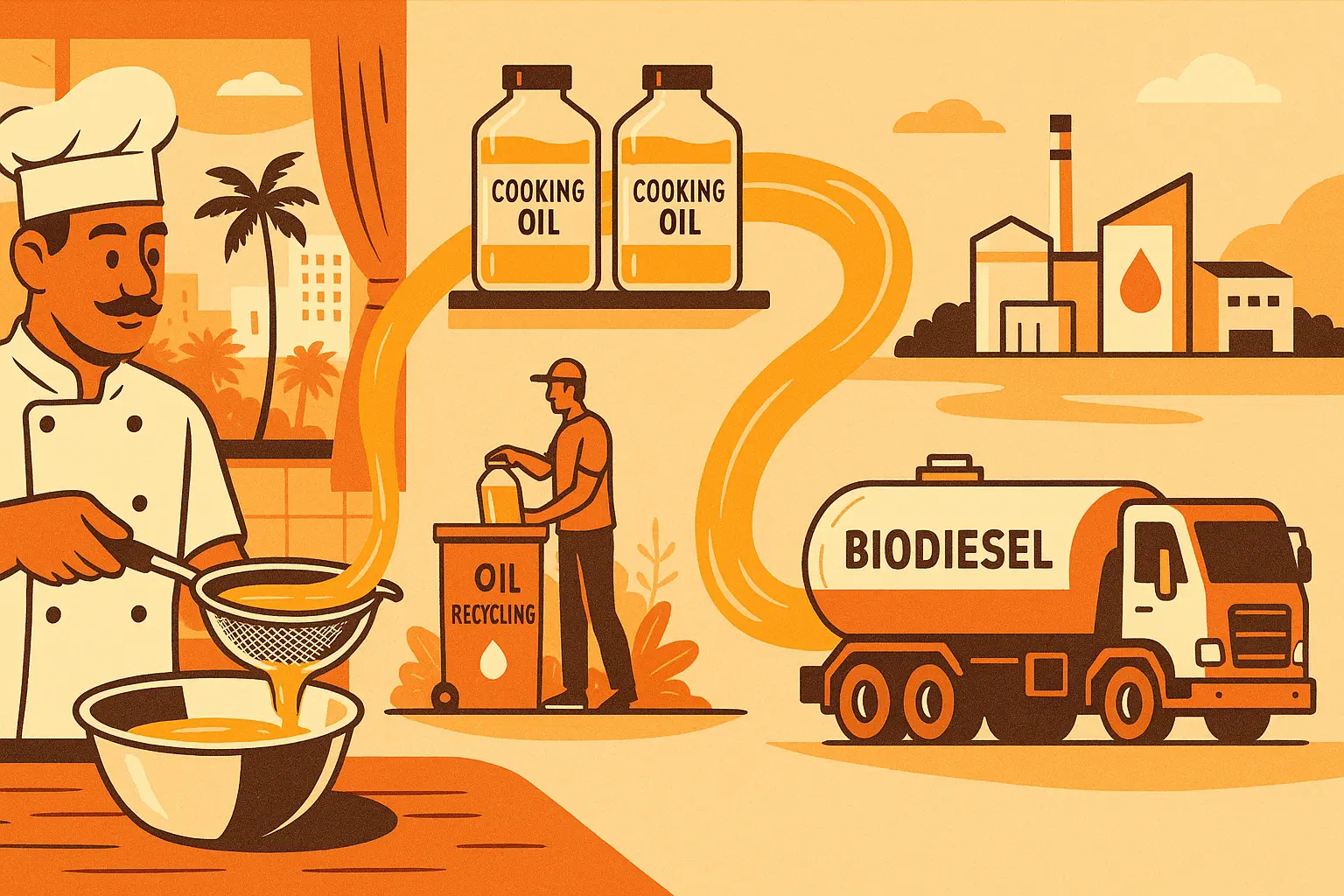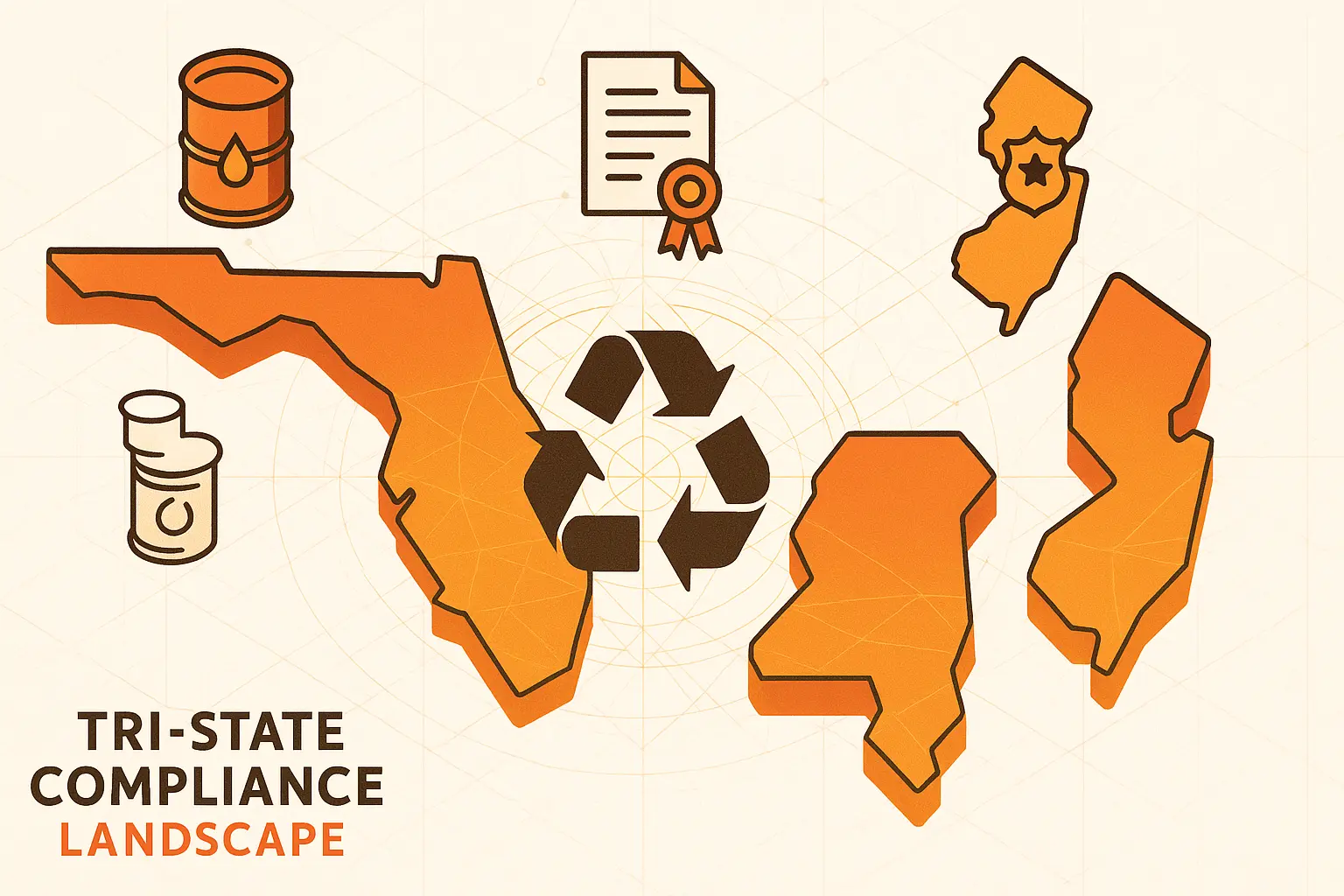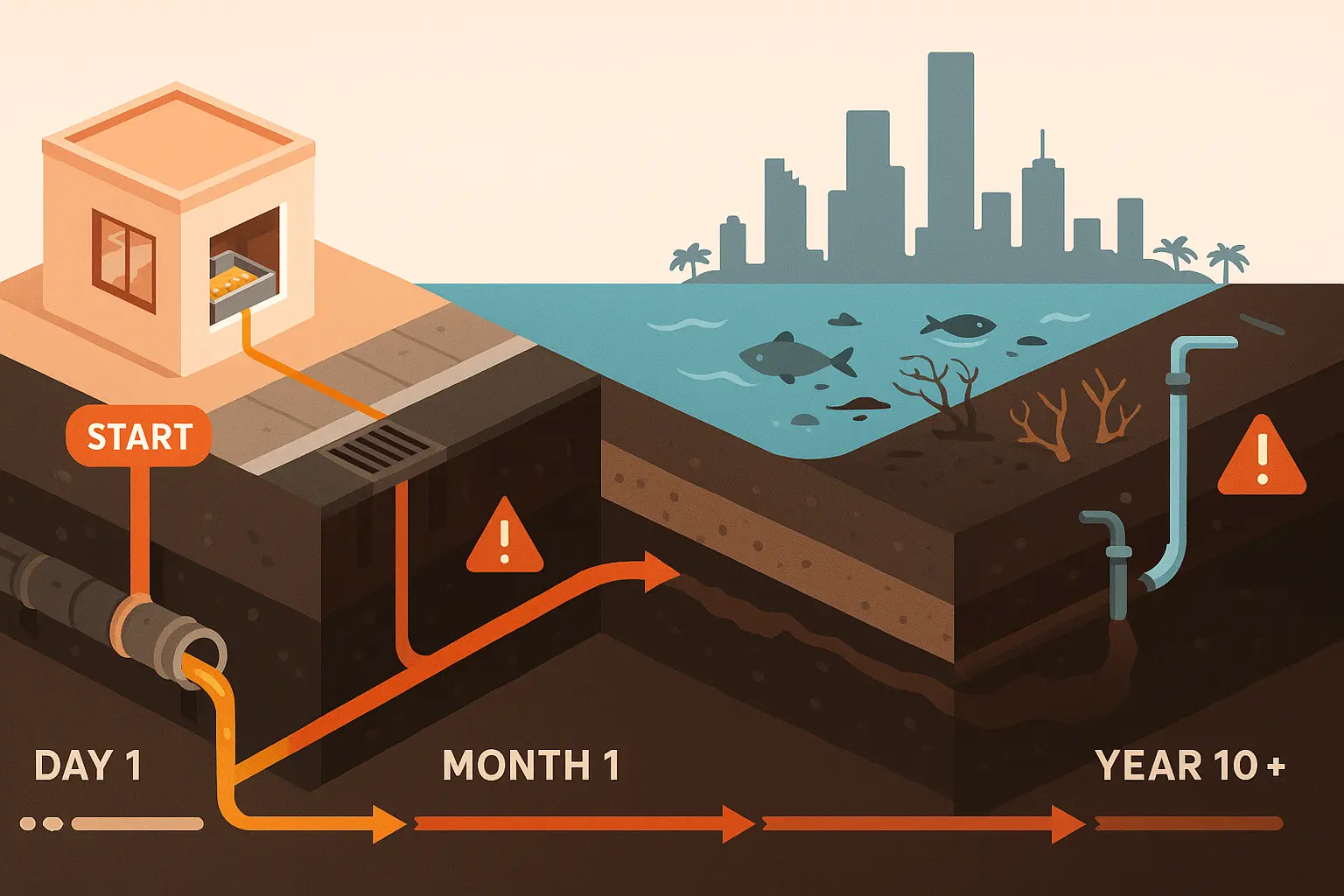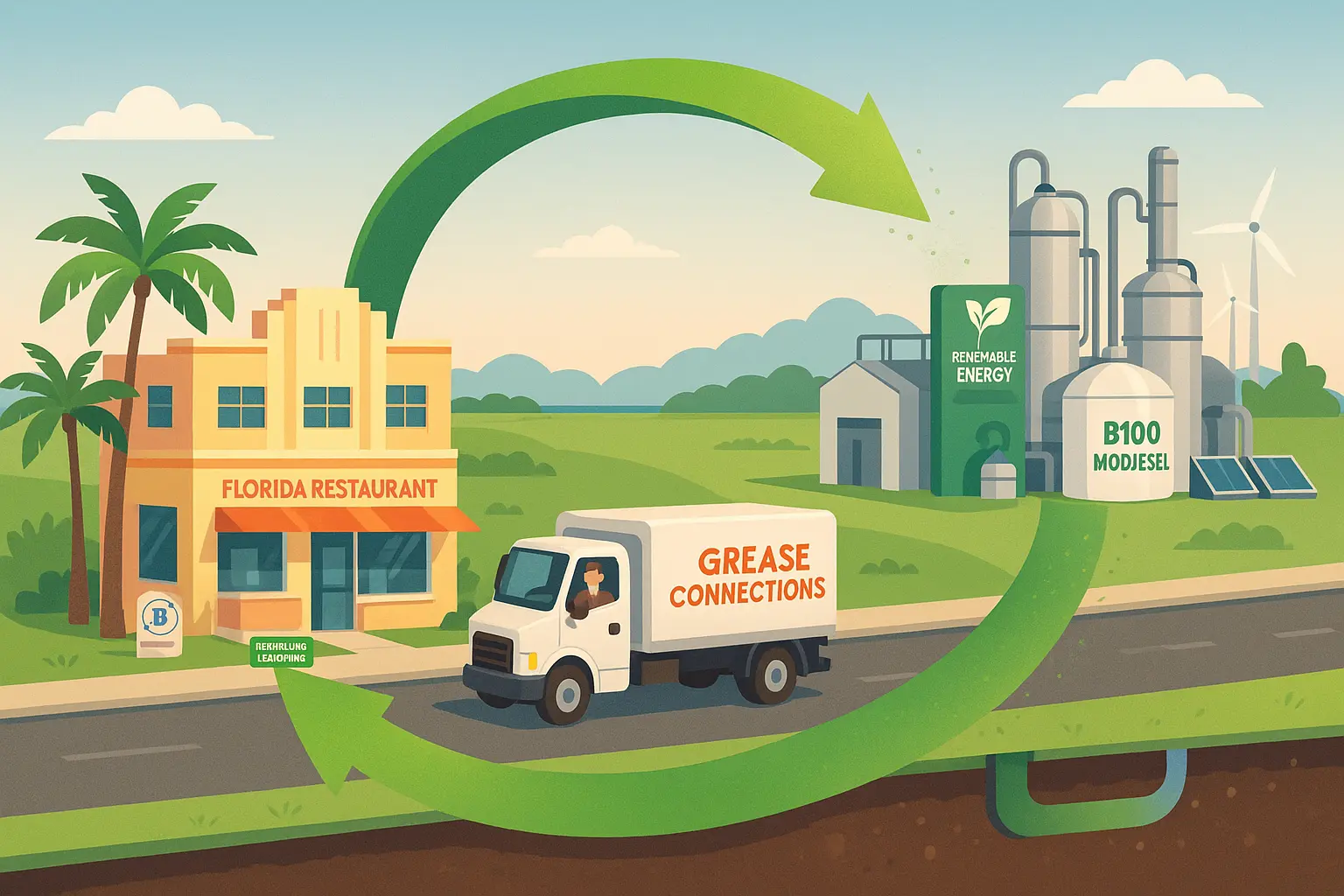You finish a Saturday fish-fry, the kitchen smells of lemon and cornmeal, and a pot of bronze-colored oil sits cooling on the stove. What happens next decides whether that fragrant leftover becomes a sewer-clogging villain or a climate-smart hero. A single gallon (≈ 3.8 L) dumped down the drain can taint a million gallons of fresh water—enough for fifty people for a year1. This guide walks you—from the first shimmering bubble to the final responsible farewell—through every twist of the oil-lifecycle story.
Environmental Impact of Improper Disposal
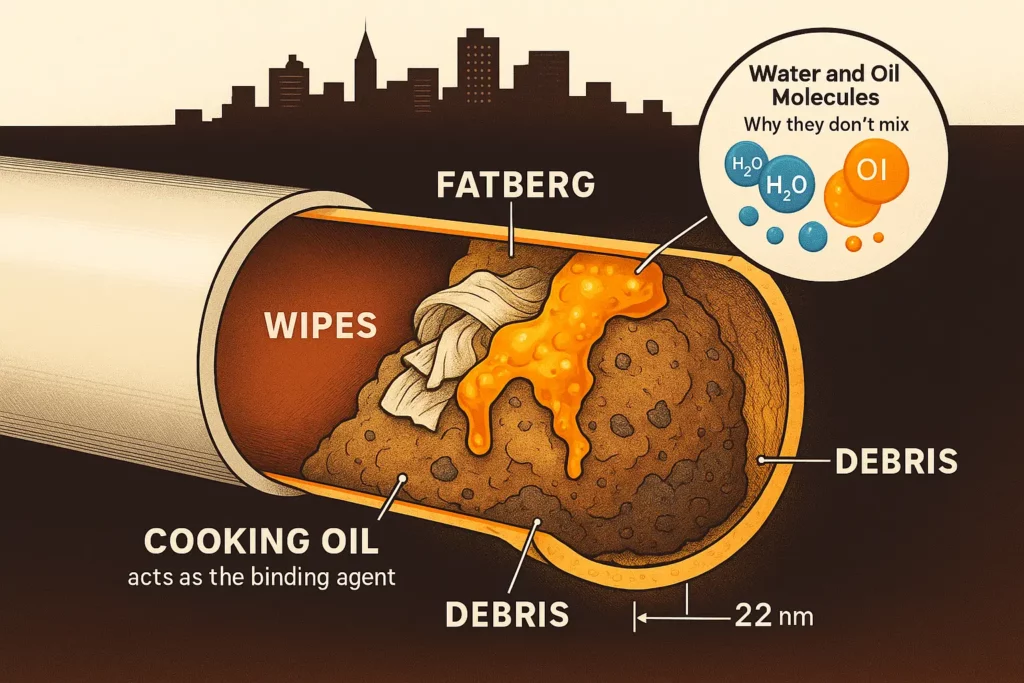
Picture a city street flooding with foul water on a rainy night. Beneath the manhole cover squats a fatberg: a house-sized lump of congealed grease, wipes and floss. Fats-oils-grease (FOG) blockages like this cause nearly half of U.S. sewer overflows2, spilling raw sewage, triggering boil-water alerts, and draining city budgets.
In nature, even a teaspoon of stray oil glides across a pond, sealing the surface like plastic wrap. Sunlight can’t reach aquatic plants, oxygen can’t dissolve for fish, and entire food webs gasp. Poured onto soil, oil coats dirt granules, turning living earth into hydrophobic dust.
Yet the villain can be redeemed: every recycled gallon becomes biodiesel that cuts life-cycle greenhouse-gas emissions up to 86 percent 3. In other words, what once threatened waterways could soon power a city bus.
Smart Storage Before Disposal

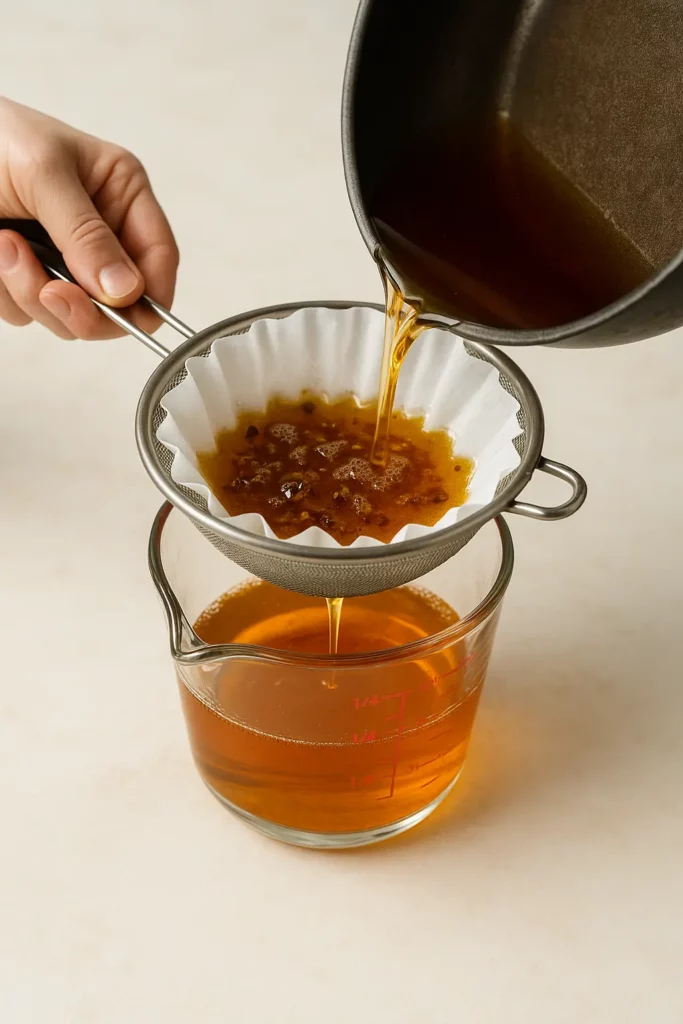
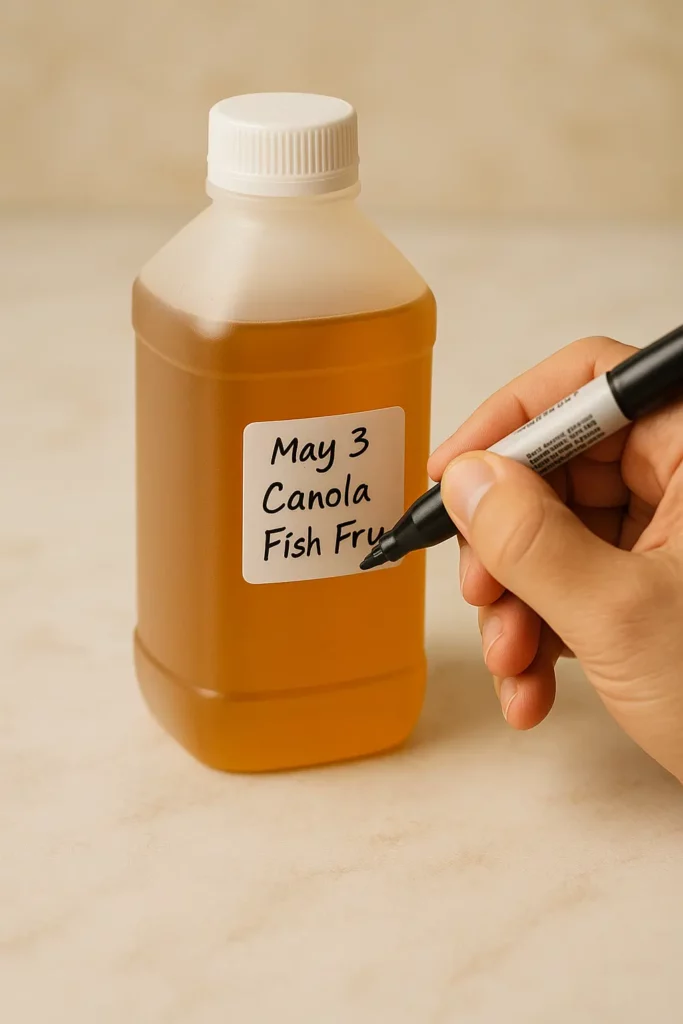
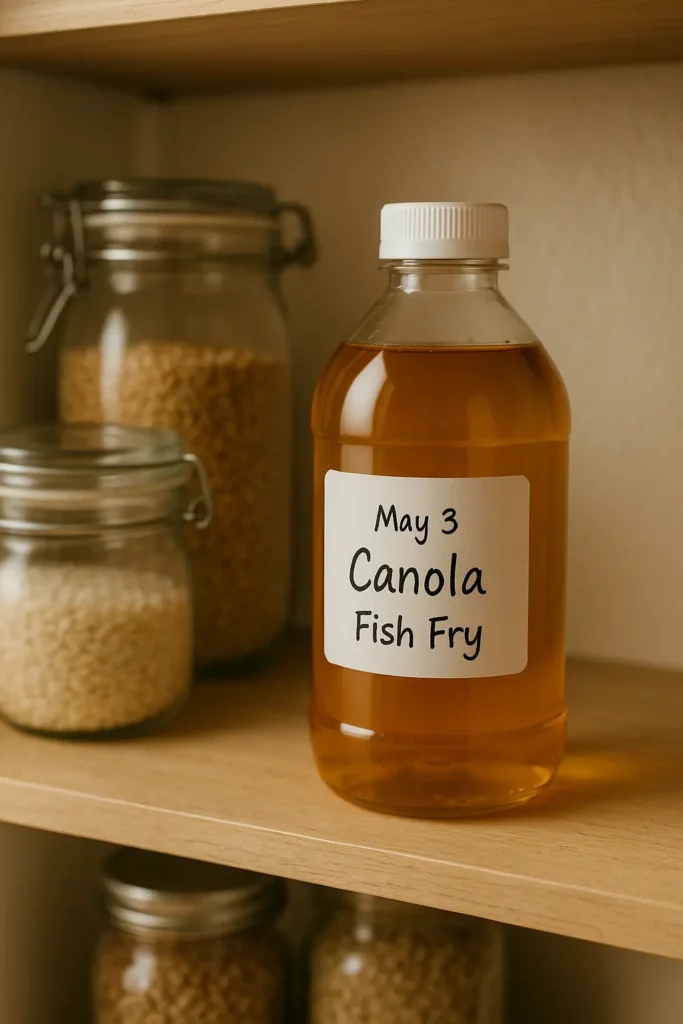
Why Cool & Strain?
Hot oil is syrupy lava—dangerous to skin and destructive to most plastics. Let it rest below 120 °F (49 °C); at that sweet spot it’s fluid enough to pour but safe to handle. While you wait, set up a fine-mesh strainer lined with a coffee filter. Slow, steady pouring skims out burnt crumbs that sour flavor and speed rancidity.
The Label That Saves Your Nose
Transfer the strained oil into a tight-lidded, leak-proof container (an original oil jug or clean HDPE #2 bottle works best). Scribble date, oil type, and dish—“Canola | Fish Fry | May 3.” That single Sharpie swipe prevents you mistaking shrimp-tinted oil for donut stock three months later.
Taste tip: Keep one jar for savory fries and another for sweets—nobody wants churros with a hint of cod.
Store vegetable oils in a dark cupboard near 65 °F (18 °C); they keep two to three months. Animal fats prefer the fridge and should star in a new recipe within four weeks.
Recycling Options & Programs—The Gold-Standard Choice
Recycling beats every other disposal tactic for both planet and plumbing, so check here first.
- Earth911 locator — Enter your ZIP on Earth911.com, the iRecycle app, or dial 1-800-CLEANUP for drop-offs and collection events.
- City HHW sites — Many municipal household-hazardous-waste depots take used cooking oil year-round and swap full jugs for empties after big holidays.
- Retail & co-ops — Hardware chains, biodiesel co-ops, and some grocery stores welcome household quantities under 5 U.S. gal (≈ 19 L). Call to confirm container rules.
Behind the scenes, haulers de-water and filter your oil before a chemical makeover—transesterification (chemical conversion of fat to fuel)—turns it into biodiesel, glycerin for soap, or biolubricants for machinery. Your leftover fries could fuel tomorrow’s commuter train.
Home Disposal Methods—Ranked Greenest to Least
- Recycle (best). Keeps waterways clear and vehicles moving.
- Reuse after filtering. Extends oil life, trims grocery bills.
- Solidify & trash. Safe fallback when no recycler exists.
- Freeze & trash. Neat for large volumes; still landfill-bound.
- Wipe & compost/trash (for drizzles only). Better than drains but last choice for quantity.
Solidify & Trash (Plan C)
Stir equal parts cooled oil and cat litter (or coffee grounds / sawdust). In minutes it becomes scoopable sludge. Double-bag, knot tight, bin it.
Freeze & Trash (Plan D)
Line a foil loaf pan with freezer paper, pour in oil, freeze overnight. The tidy brick plops into the garbage; pan rinses clean.
Wipe & Compost (Plan E)
For faint residue, wipe the skillet with a paper towel or crust of stale bread—then compost or toss the absorber.
Even a tablespoon down the sink can seed the next fatberg—skip the drain every time.
Filtering & Reusing—From Golden Back to Good-as-New
Imagine you’ve hosted a holiday fish fry. Day two arrives; you crave churros, but the pot looks murky. Here’s how to rescue that liquid gold:
- Everyday filter — Warm oil, then pass it through a sieve + coffee filter into a clean jar.
- Gelatin clarification (chef-level) — For each quart (≈ 0.95 L), dissolve 1 tsp (5 mL) unflavored gelatin in ¼ cup (60 mL) water, stir into warm oil, chill overnight. A rubbery puck traps the tiniest burnt bits; lift it out and marvel at near-new clarity.
How Many times can you reuse cooking oil?
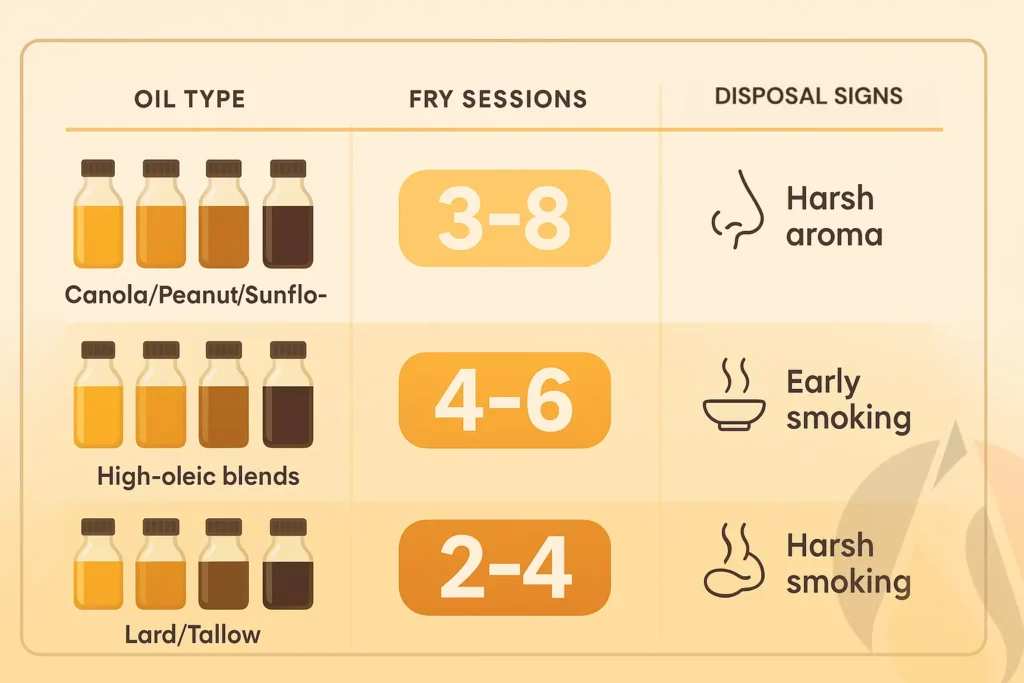
| Oil Type | Safe Fry Sessions | Telltale Retirement Signs |
|---|---|---|
| Canola, Peanut, Sunflower | 3 – 8 | Deep mahogany hue; harsh aroma |
| High-oleic blends | 4 – 6 | Early smoke point; foaming |
| Lard, Tallow | 2 – 4 | Beefy off-smell; early smoking |
Dispose of any oil that smells like crayons, smokes at normal heat, or bubbles like a science-fair volcano.
Creative Repurposing—When You Can’t Fry Again
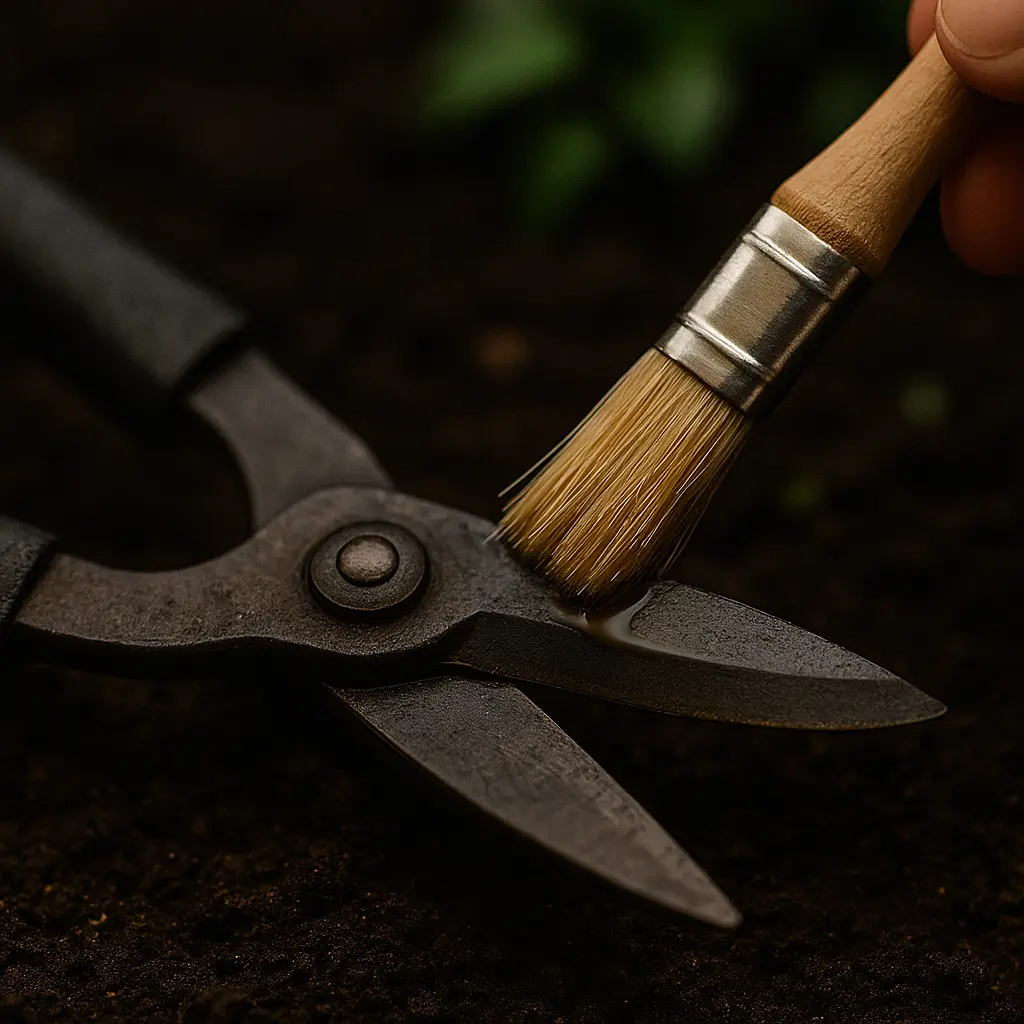
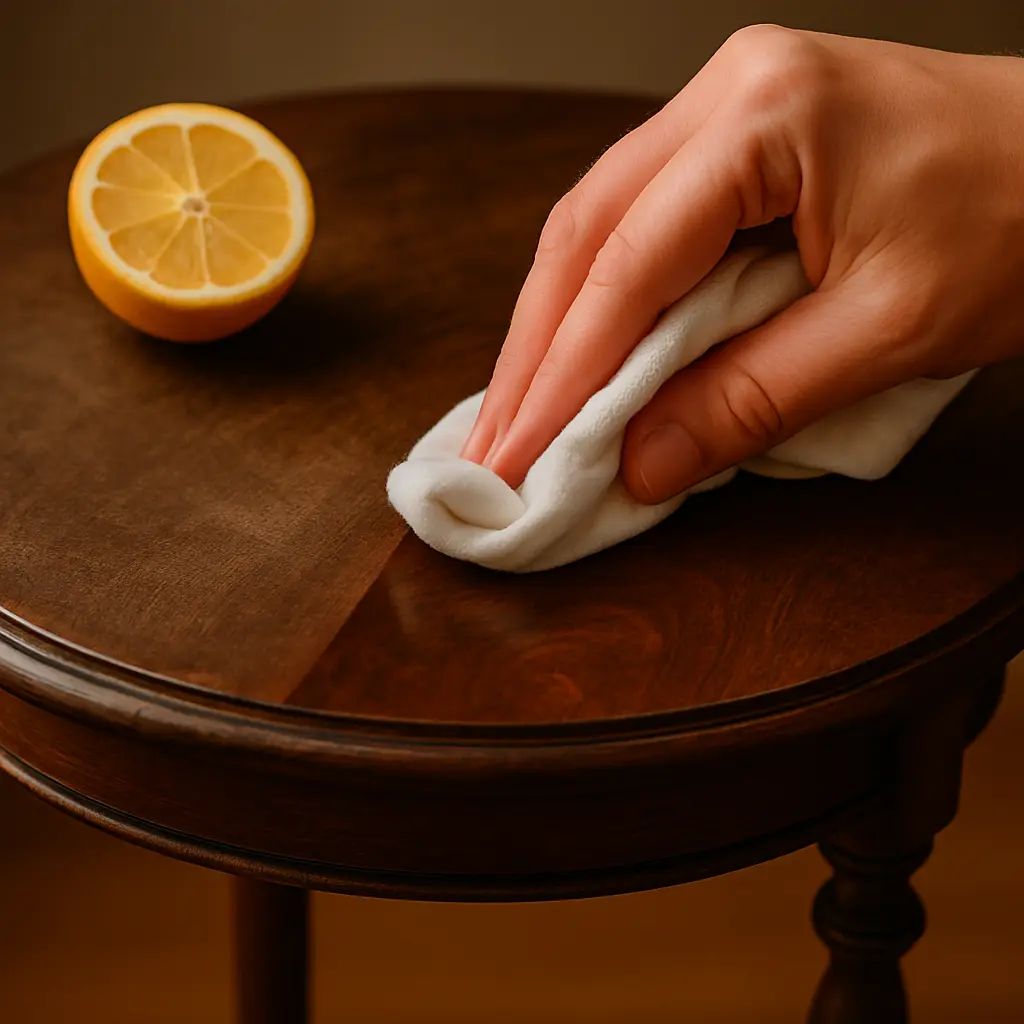
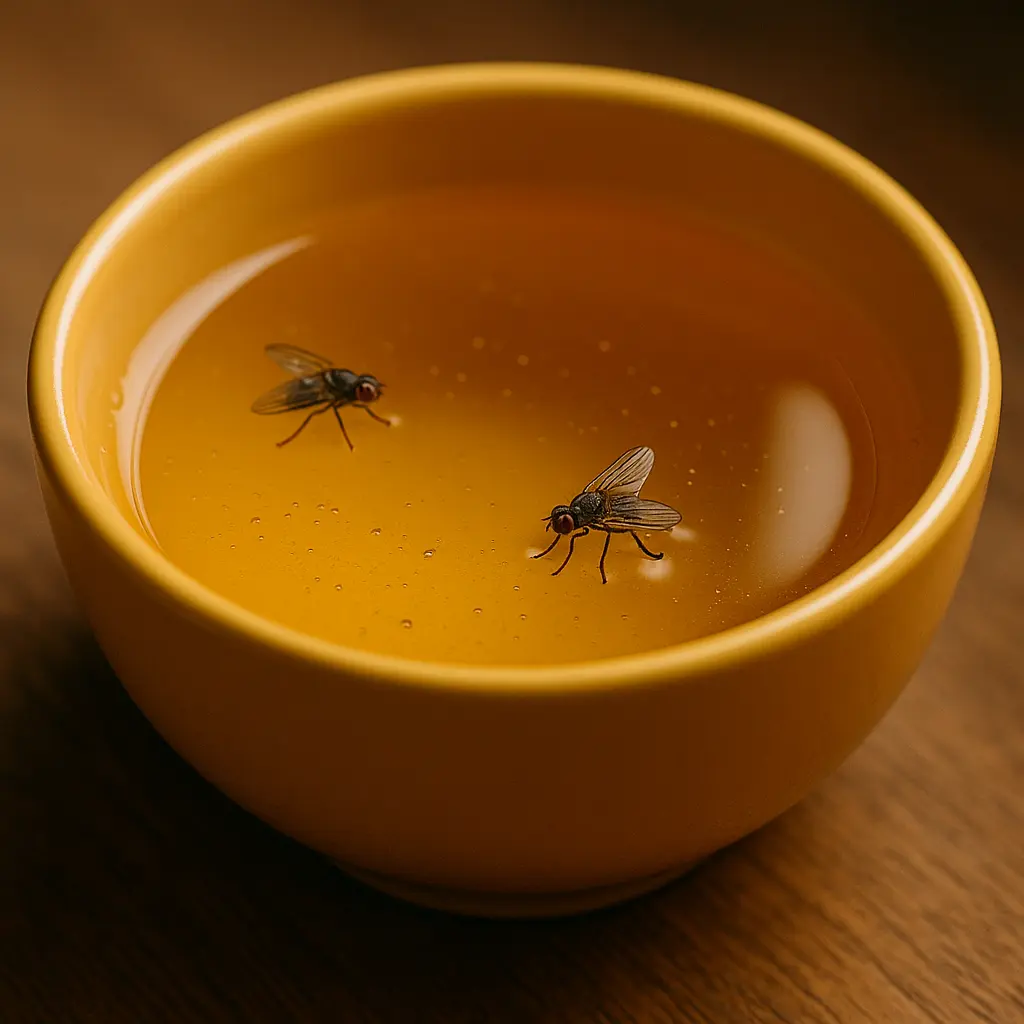
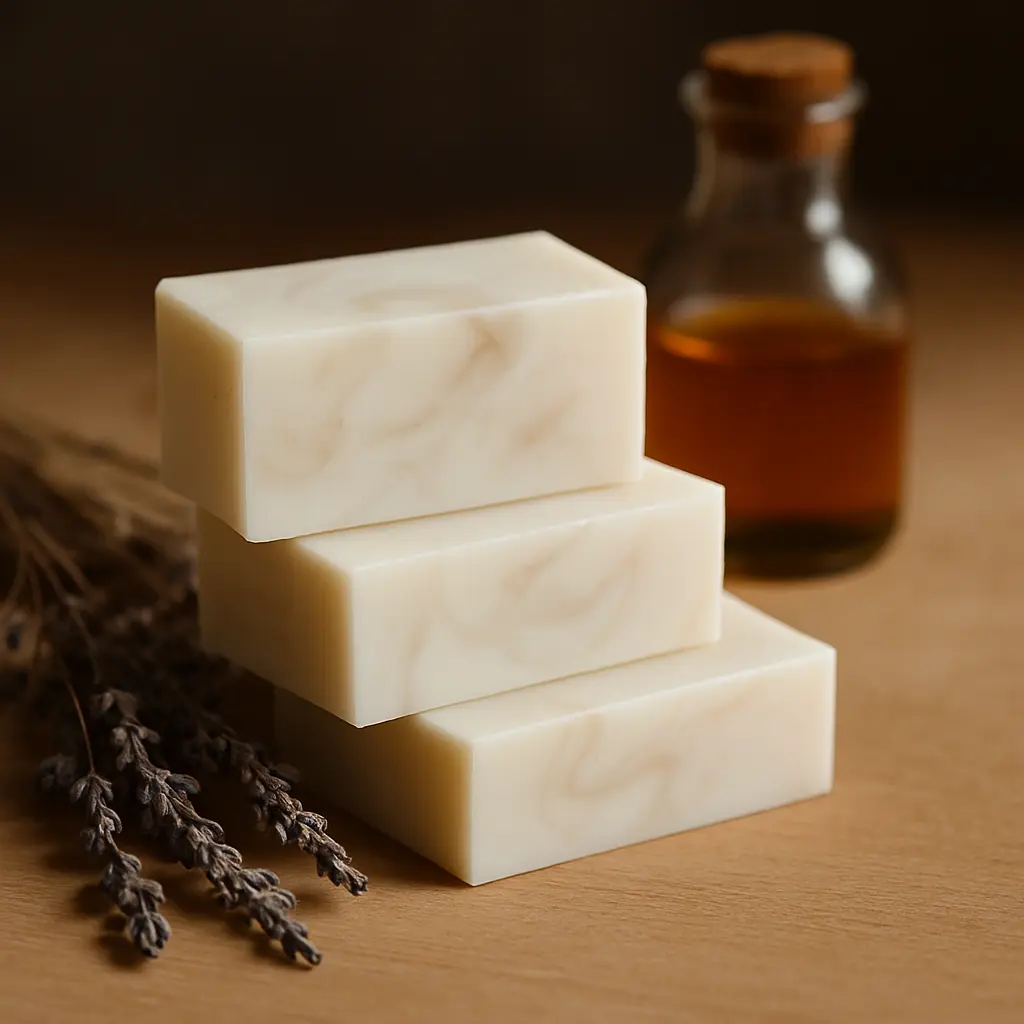
Before you dump, ask: Can this oil earn one more badge?
- Rust shield — Light brush on garden shears blocks humidity better than store-bought spray.
- Wood polish — Two parts oil, one part lemon juice; rub, wait ten minutes, buff—hello, farmhouse glow.
- DIY soap — Follow a saponification chart (lye-to-fat ratio guide), gloves on. Your kitchen becomes a lavender-scented lab.
- Fruit-fly trap — A yellow bowl, half oil–half water. Flies dive in; none climb out.
Local Regulations & Compliance—Know Your Zone
Dumping grease down drains is illegal nationwide. Fines range from $50 to $1,000 for homes; restaurants risk closure for neglected grease traps. Infrastructure differs: some counties offer curbside “yellow-grease” bins, others require a hazardous-waste trip. Ten minutes on your county website—or Earth911—keeps you and the waterways safe.
Your Decision Flow—Kitchen Poster-Ready
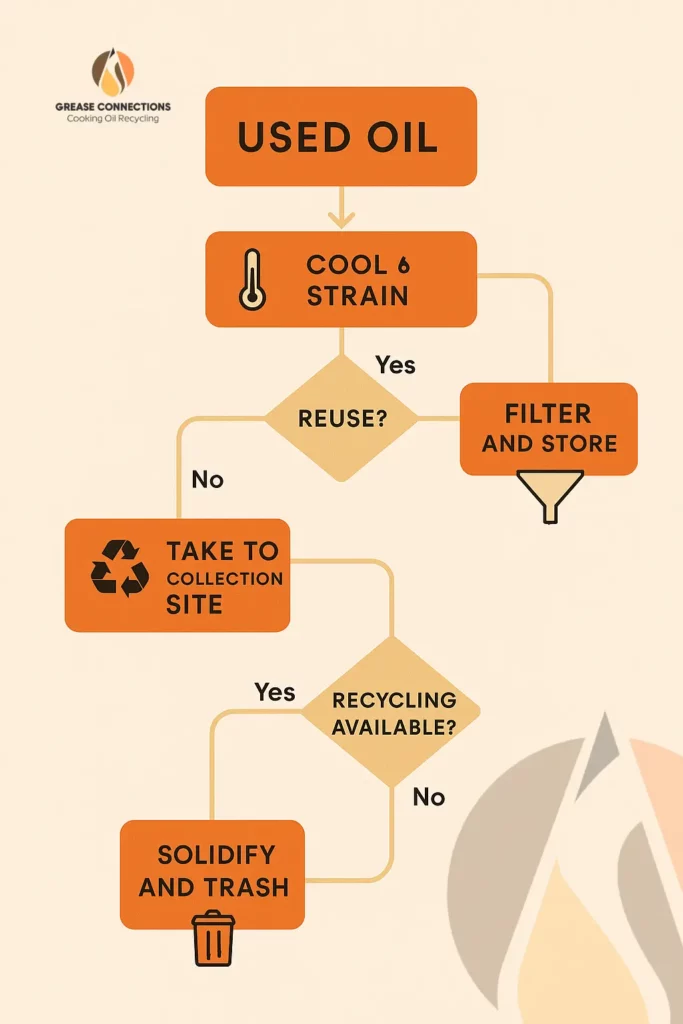
Cool → Strain → Reuse or Recycle → No Recycle? Solidify / Freeze / Wipe → Trash.
Stick that mantra on the fridge and you’ll never second-guess again. Download and print the decision flow in PDF format.
FAQ—Your Most-Googled Grease Questions
“Can I dilute oil with dish soap and hot water?”
Nope. Hot water cools mid-pipe; oil congeals downstream and starts a fatberg.
“Is bacon grease recyclable?”
Yes—any edible fat is welcome. Strain, label, seal, drop off.
“Will small amounts harm my compost?”
A thin film on a paper towel is fine. Liquid oil smothers microbes—skip it.
“How do I know oil is rancid?”
Heat a teaspoon; early smoke or a crayon-like odor means retirement time.
Ready to Act—Your Three-Step Starter Plan
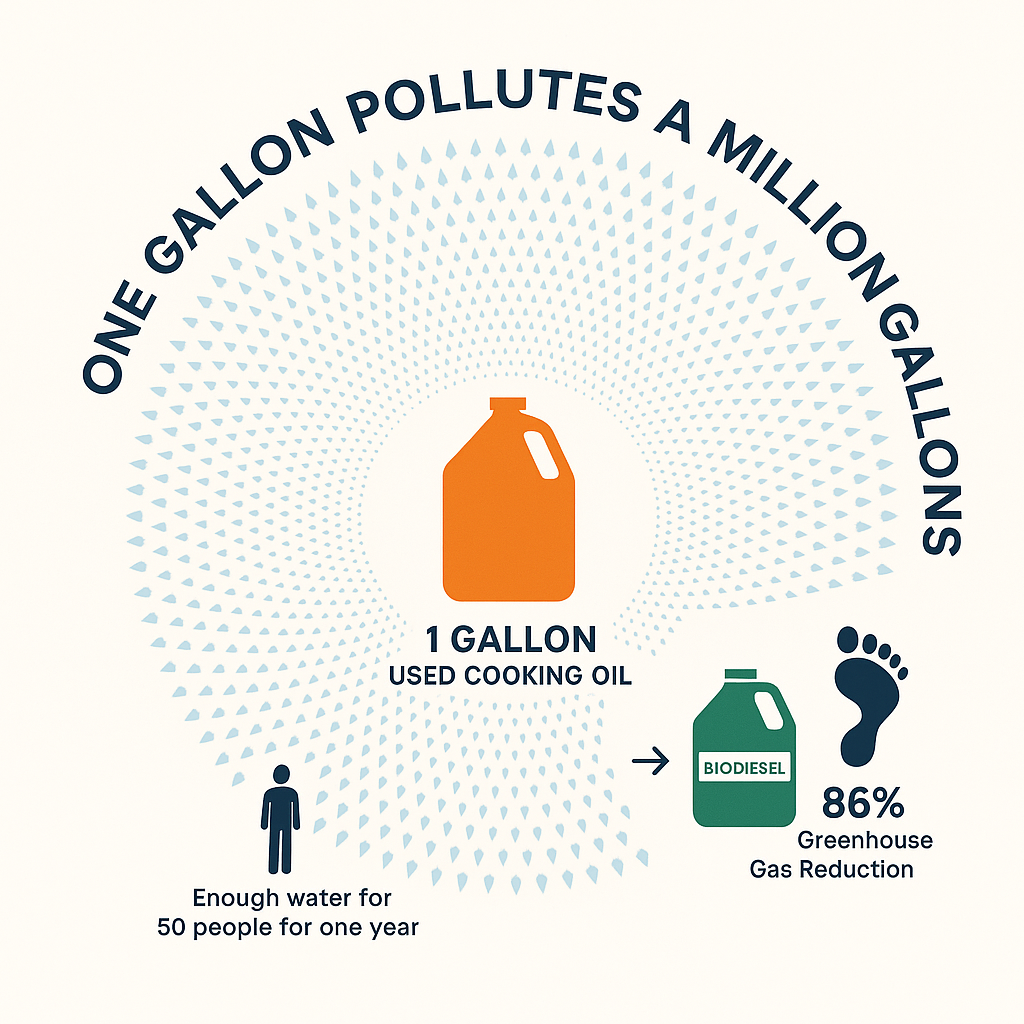
- Prep a container tonight. Grab a clean #2 plastic jug, label it “USED COOKING OIL,” park it under the sink.
- Plot your drop-off. Open Earth911, type your ZIP, bookmark the map. You’ll thank yourself after the next fish fry.
- Spread the word. Text a friend this stat: One gallon of oil can pollute a million gallons of water4. Challenge them to recycle their next batch.
Every mindful pour transforms kitchen waste into a valuable resource, shielding sewers, rivers and even the climate. The next time your skillet cools, remember: that shimmering pool isn’t trash—it’s potential on standby.
References
- United States Environmental Protection Agency. Used Oil Management Program Overview. (Source) ↩︎
- Fluence Corp. “Removal of Fat, Oil, and Grease from Wastewater.” (Source) ↩︎
- Rajendran, S. et al. “Life-Cycle Greenhouse-Gas Benefits of Biodiesel from Waste Cooking Oil.” Environmental Science & Technology, 2023. (Source) ↩︎
- United States Environmental Protection Agency. Used Oil Management Program Overview. (Source) ↩︎ ↩︎
